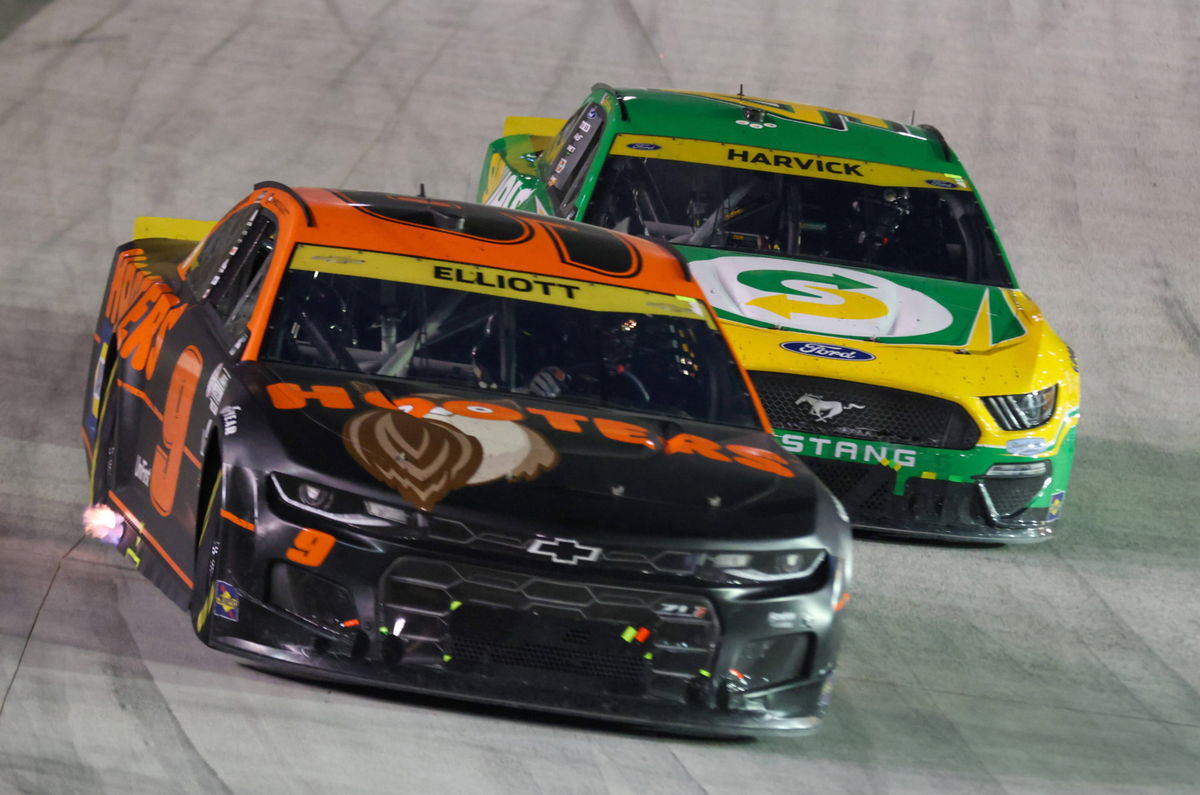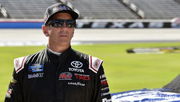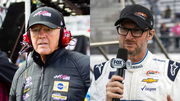
USA Today via Reuters
NASCAR, Motorsport, USA Bass Pro Shops Night Race, Sep 18, 2021 Bristol, Tennessee, USA NASCAR Cup Series driver Chase Elliott 9 and driver Kevin Harvick 4 compete during the race at Bristol Motor Speedway. Mandatory Credit: Randy Sartin-USA TODAY Sports, 18.09.2021 22:43:23, 16783977, Nascar, Bristol Motor Speedway, Chase Elliott, Kevin Harvick PUBLICATIONxINxGERxSUIxAUTxONLY Copyright: xRandyxSartinx 16783977

USA Today via Reuters
NASCAR, Motorsport, USA Bass Pro Shops Night Race, Sep 18, 2021 Bristol, Tennessee, USA NASCAR Cup Series driver Chase Elliott 9 and driver Kevin Harvick 4 compete during the race at Bristol Motor Speedway. Mandatory Credit: Randy Sartin-USA TODAY Sports, 18.09.2021 22:43:23, 16783977, Nascar, Bristol Motor Speedway, Chase Elliott, Kevin Harvick PUBLICATIONxINxGERxSUIxAUTxONLY Copyright: xRandyxSartinx 16783977
As crude and unfiltered NASCAR racing is, the governing body has established strict rules. The aim behind NASCAR doubling down on its tight guidelines is to create a brand of unaided and pure racing skill. This is why traction control is one aspect that has created much controversy in the NASCAR community. While Formula One and other motorsports like CART have avoided the safety feature in their vehicles, NASCAR has also been against it for a major part of its history.
Watch What’s Trending Now!
Tractional control prevents drivers from losing control of their cars by stopping the unfavorable spinning of the wheels. The feature can immediately detect a situation where the wheels are going faster than the car and decelerate their rotation to provide great traction and complete control for the driver. NASCAR has pondered the argument between raw skill and technological aid for years, and traction control has been a big part of it.
ADVERTISEMENT
Why has NASCAR considered traction control a taboo?
In stock car racing, the rear tires do most of the work. As a result, the rear tires lose traction much faster than the front tires. This leads a car’s tail to drift toward the retainer walls and is particularly risky when exiting a corner or moving around a high-banked turn. To prevent this from happening, many drivers have advocated the use of traction control in NASCAR.
Traction control can decelerate the car by reducing up to 50 horsepower in stock cars. This allows the driver to lift his foot off the gas and gain more control over the maneuvering. For NASCAR, traction control is no less than using banned substances in athletics. However, prioritizing a driver’s skill in the car has contradicted its aim to improve the sport’s safety.
Traction control has its positive effects. It doesn’t merely prevent the cars from sliding, but as a result, it stops a lot of accidents from happening as well. For a long time, NASCAR teams have been accused of using traction control devices in their cars. On another note, certain teams have also alleged that NASCAR has not thoroughly investigated suspicious racing team activities.
ADVERTISEMENT
ADVERTISEMENT
Traction control devices are extremely small and can even fit in a driver’s front pocket. Should a mid-race investigation be announced, drivers can even throw it out of the window and go unnoticed. In other words, NASCAR had no way of knowing whether drivers were smuggling traction control devices into their cars.
Read More: NASCAR’s Forgotten Gnarliest Racetrack: “The Track That Ate the Heroes”
ADVERTISEMENT
In the past, there have been instances of NASCAR investigating cars for a suspected use of traction control. A driver who has faced such accusations multiple times is 4-time Cup Series champion Jeff Gordon.
Top Stories
Denny Hamlin Faces Unthinkable Loss After Tragic House Fire on Parent’s 52nd Anniversary Night

$110,000 Richer Kyle Larson Says ‘You Can’t Count Him Out’ After Lucky Caution to Fend Off 20 YO HMS Prodigy

Ross Chastain Recalls the Shady Sponsor Deal as “Red Flags” Exploded Into Federal Raid Just Days After Lavish Christmas Party

New Audio Related To Greg Biffle’s Final Moments Emerges Days After Statesville Tragedy

Dale Jr. Warns of Deeper Issues as Joe Gibbs Parts Ways With Decade-Long Executive

Jeff Gordon’s encounter with allegations of traction control
Following the 1995 Coca-Cola 600, NASCAR officials had found Jeff Gordon’s crew chief, Ray Evernham, guilty of using prohibited parts in the #24 car. Evernham was fined $60,000 for the violations. Gordon’s team had modified the right front-wheel spindle, which was not under NASCAR’s guidelines. However, as the investigation began, NASCAR also suspected that there might have been a possible use of traction control.
ADVERTISEMENT
The situation escalated to a new level in 2003 when Gordon won at the Atlanta Motor Speedway. Gordon produced a splendid performance to claim the win, and in fact, it was so good that rivals suspected he’d cheated his way to victory. Gordon ran the #24 car so high at the Atlanta corners yet didn’t lose traction in his rear tires or drift toward the retainer wall. This raised some eyebrows in the garage area.
NASCAR noticed this and brought the car’s rear end to the R&D center in Conover, North Carolina. According to the examination results, nothing suspicious or prohibited had been found that could put Gordon and his team in trouble. One of the drivers even suggested that it was no surprise that no violation had been reported since traction control was becoming a common thing in NASCAR.
In response to these statements, Gordon’s crew chief, Robbie Loomis, dismissed the claims by saying that the Atlanta Motor Speedway is not a suitable track for traction control.
ADVERTISEMENT
“I don’t really know enough about it,” Loomis said. “Obviously, it would work at the short tracks, and anywhere you have a lot of wheel spin. But at Atlanta, the car stays pretty hooked up, and you have a lot of traction. Me personally, I don’t think it’s out there that much. Somebody might slide in and use it every now and then on you. But my hat’s off to any team that’s got an engineer good enough to dial that stuff in.“
Watch This Story: Kenny Wallace: A NASCAR legend’s Hall of Fame induction
The debate over the use of traction control has continued for a long time. No concrete evidence has ever been found. But if that is not the case, the sport’s legitimacy could be questioned, and numerous championships and victories could be stripped away.
ADVERTISEMENT
ADVERTISEMENT
ADVERTISEMENT
ADVERTISEMENT

